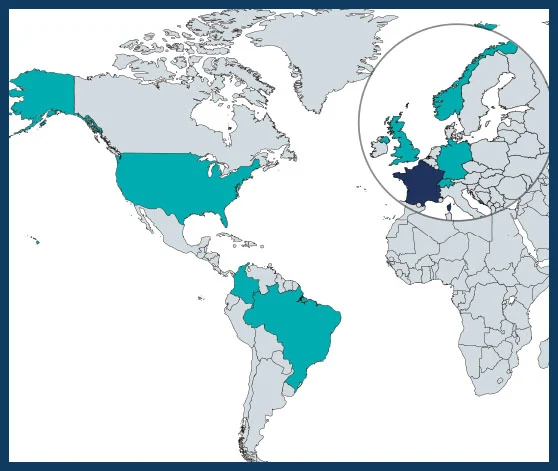02-2019 to 03-2022
€ 1,229,205
Marie-Paule Bonnet
marie-paule.bonnet@ird.fr
Institut de Recherche pour le Développement (IRD), Montpellier, FRANCE
Centre de Coopération Internationale en Recherche Agronomique pour le Développement (CIRAD), Montpellier, FRANCE
Institut de Recherche en Sciences et Technologies pour l’Environnement et l’Agriculture (IRSTEA), Montpellier, FRANCE
Instituto Nacional de Pesquisas Espaciais, Sao José dos Campos, BRAZIL
Universidade de Brasília, Brasilia, BRAZIL
Universidad Nacional de Colombia, Palmira, COLOMBIA
Friedrich-Schiller-University, Jena, GERMANY
Norwegian University of Life Sciences, Aas, NORWAY
Université de Lausanne, SWITZERLAND
University of East Anglia, Norwich, UNITED KINGDOM
University of California, Santa Barbara, USA
Virginia Polytechnic Institute and State University, Blacksburg, USA

Amazonian “whitewater” river floodplains have long been centers for human settlements. Over the past several decades, unprecedented demographic and economic growths have influenced resource use and challenged capacity to sustain both humans and biodiversity on the floodplain and bordering upland. Threats to the integrity of Amazon floodplain habitats from dams, river navigation networks, extension of the agricultural frontier, and climate change are increasingly severe. However, to date, biodiversity scenarios for the Amazon wetlands have not considered all these critical drivers.
The overall objective is to work with stakeholders to find solutions enabling preservation of biodiversity and ecosystem services in Amazon floodplain environments under a variety of development scenarios, and to provide support for decision-making at local and regional scales. To explore potential scenarios of Amazonian floodplain biodiversity and services in a rapidly changing socio-environment, BONDS will:
1. Improve methods for capturing the spatio-temporal variability of floodplain habitats, allowing us to scale up existing biodiversity data sets and to evaluate the potential impacts of drivers such as climate, land use intensification, and dams upon wetlands habitats;
2.Improve knowledge on the interactions between local populations and their environment and how they may adapt to changes in regional drivers, including socio-demographic and socio-economic drivers;
3.Understand how public policies and governance have contributed and may bet- ter contribute to wetland habitat protection and freshwater biodiversity conservation by comparing several scenarios.
Wetland habitats will be mapped combining multiple remote sensing products at medium to high resolution. The interactions between biodiversity, habitats, hydrology and fisheries management will be studied. Exploratory scenarios will be built with different types of stakeholders (e.g. local population, commercial fisheries representatives) and decision-makers.
Specific activities for dissemination of the project’s outputs will be implemented, including contribution to GEO BON, GEO Wetlands and GBIF databases. Knowledge transfer and involvement of stakeholders / policy-makers into the re- search will be promoted through their participation into the construction of the conceptual floodplain socio-ecosystem model that will be implemented as a multi- agent-based communication platform. The latter will be further used to explore scenarios with them to look at solutions to improve management.